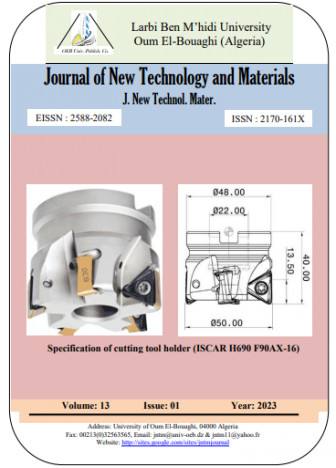Starch from plant extract to plastic component
Keywords:
blend, bio-polymeres, polyolefin,, and starchAbstract
Polypropylene (PP) and Polyethylene (PE) are considered to be the most consumed polymers nowdays. In fact, they are
part of the major components of plastic waste, in addition to their insoluble in water and even more hydrophobic, The end
of life of polyolefins is particularly harmful for the environment. The main of our work is to introduce a polysaccharide in
the polyolefin blend to cause partial biodegradation of our system, with conservation and improvement of their properties.
Several PP / PE blends were prepared in different levels of thermoplastic starch (TPS). All the blends were prepared in an
internal mixer. The results indicates changes in the blends in terms of morphological, Mechanical, Thermal, structural and
rheological properties. However, the different blends/bio-composites were studied by means of dynamic rheological
behavior (DRB), Fourier transform infrared (FTIR) spectroscopy, Melt flow index (MFI), Izod impact (unnotched) tests,
Thermogravimetry (TG), and Scanning Electron Microscopy (SEM





